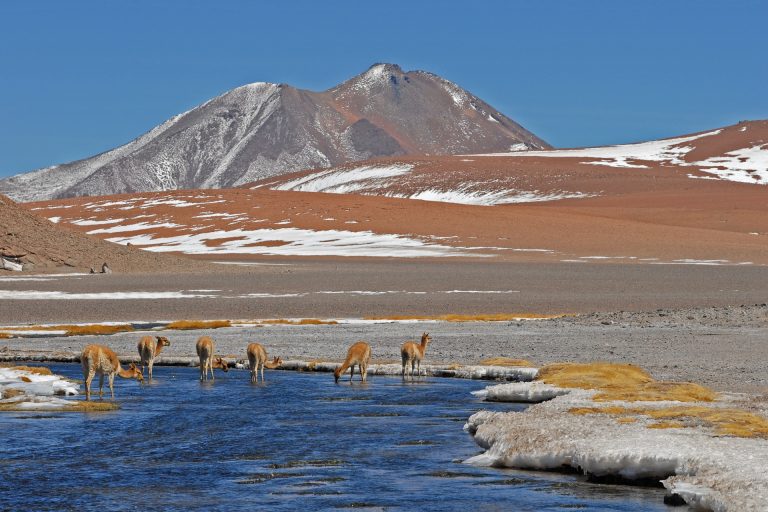DOMINICAN REPUBLIC Travel Guide for 2024: Discover the Paradise

Welcome to our comprehensive Dominican Republic travel guide, where vibrant culture, stunning beaches, and delectable cuisine await you.
Discover fast facts about the country, find out the best time to visit, explore historical landmarks, get budgeting tips, and indulge in the culinary delights of traditional Dominican cuisine.
From the lively streets of Santo Domingo to the tranquil shores of Punta Cana, this Dominican Republic travel guide is your key to unlocking the beauty and experiences that this Caribbean paradise has to offer.
What to See and Do in the Dominican Republic
The Dominican Republic is a treasure trove of captivating attractions and exciting activities. Here are some must-see highlights to add to your Dominican Republic travel itinerary:
- Punta Cana – This slice of paradise is renowned for its immaculate Dominican Republic beaches. Basking in sun, splashing around in turquoise waters, and trying out water sports could be your everyday routine here. While in Punta Cana, don’t miss out on the Indigenous Eyes Ecological Park, an educational and adventurous treat for children and adults alike.

- Santo Domingo – Delve deeper into the rich history of the Dominican Republic in its capital, Santo Domingo. The Colonial Zone houses some authentic landmarks of the Dominican Republic, such as historic buildings and the Alcázar de Colón.

- Samana Peninsula – A visual spectacle awaits here from January to March as humpback whales embark on their migration journey. Alongside, explore El Limón waterfall and Los Haitises National Park.

- Puerto Plata – Ascend to the peak of Mount Isabel de Torres on a thrilling cable car ride that offers panoramic views. Don’t forget to appreciate the historical allure of Fort San Felipe, one of the key Dominican Republic landmarks.

- La Romana – Discover Altos de Chavón, an authentically recreated medieval village, offering a unique blend of history and art. Moreover, a boat trip to Isla Saona promises a day filled with stunning beaches and memorable snorkeling experiences.

- Jarabacoa – For families who embrace outdoor adventures, Jarabacoa is the place to be. Get busy with white-water rafting, hiking trails, or immerse yourself in the beauty of the magnificent Jimenoa Waterfalls.

- Cayo Levantado – After the hustle-bustle, take a breather on Cayo Levantado. This picture-perfect island boasts golden beaches and turquoise waters, presenting a tranquil sanctuary for a relaxed getaway.

Fast Facts About the Dominican Republic
- Climate: Experience a tropical climate with warm temperatures year-round. Be prepared for occasional rain showers, especially during the rainy season from May to November.
- Local Currency: The official currency is the Dominican Peso (DOP). ATMs are widely available in cities and tourist areas.
- Power Voltage: The standard voltage is 110-120V, 60Hz. Consider bringing a power adapter if your devices require a different voltage.
- Language: Spanish is the official language, but English is widely spoken in tourist areas.
- Religion: The Dominican Republic is predominantly Roman Catholic, and you’ll find many churches and religious festivals across the country.
- Safety: While the Dominican Republic is generally safe for tourists, exercise caution in busy areas and be mindful of your belongings.
- Cultural Etiquette: Greet people with a friendly “Hola” and use “Por favor” (please) and “Gracias” (thank you) when interacting with locals.
- Tipping: Tipping is customary in restaurants, usually around 10% of the bill. At all-inclusive resorts, tips may already be included.
- Local Cuisine: Savor traditional dishes like “La Bandera” (rice, beans, and meat), “Mangú” (mashed plantains), and fresh seafood.
When to Visit the Dominican Republic: Seasons and Festivals
- December to April: Experience the dry and pleasant weather of the high tourist season. Enjoy beach activities and outdoor adventures.
- May to November: The rainy season brings lush greenery and occasional downpours. Prices may be lower, and fewer crowds are expected.
- Carnival (February): Join the vibrant Carnival celebrations, especially in Santo Domingo and La Vega, featuring parades, music, and dancing.
- Semana Santa (Holy Week, March or April): Witness religious processions and traditional events during the week leading up to Easter.
- Merengue Festival (July): Immerse yourself in the lively rhythms of merengue music during this festival in Santo Domingo.
- Festival de Santo Domingo (August): Celebrate the city’s founding with street fairs, concerts, and cultural activities.
- Dominican Republic Jazz Festival (November): Enjoy world-class jazz performances in various cities, including Puerto Plata and Santo Domingo.
How To Get Around the Dominican Republic
Here are the best ways to get around to consider when planning your Dominican Republic trip:
- Renting a Car: The freedom to explore at your leisure makes car rental a popular choice among travelers. It’s particularly useful if your itinerary involves visiting multiple destinations. But remember, navigation can be tricky due to unpredictable traffic and road conditions.
- Public Transportation: For a more authentic experience, immerse yourself in the local culture on a ‘guagua‘ – public buses that offer an affordable way to commute between cities and towns. It’s worth noting, though, that they may not run as frequently as you’d like.
- Taxis: Reliable and comfortable, official taxis provide another convenient mode of transport. Whether metered or with fares negotiated upfront, ensure to settle on a cost before starting your journey to prevent any surprise charges.
- Motoconchos: Fancy a quick and local experience? Motoconchos, or motorcycle taxis, are commonly engaged for short distances. Remember to negotiate the fare ahead of time to dodge any misunderstandings.
- Domestic Flights: When it comes to longer distances between cities, domestic flights offer a swift solution. While this might be a higher investment, it could save you plentiful hours.
- Ferries: Island hopping? Board a ferry! Comfortable and delightful, ferries connect major points like Samana and Santo Domingo. This nautical voyage can add another level of fun to your Dominican Republic exploration.
- Bicycles: Some tourist spots have bike-friendly infrastructure, allowing you to discover the locale more organically, pedal by pedal. Rent one and enjoy a leisurely day investigating urban surprises.
How to Stay in the Dominican Republic: Accommodation Tips
Packing a vacation with exhilarating activities is crucial, but so is ensuring your accommodations elevate your experience in the Dominican Republic. Here are some suggestions depending on your travel style:
- All-Inclusive Resorts: Craving a luxurious stay packed with convenience? Opt for all-inclusive resorts. They provide a one-stop solution catering to accommodation, tantalizing meals, and fun-filled activities. All you need to do is arrive, relax and indulge!
- Boutique Hotels: If you’re seeking a unique lodging experience flavored with a pinch of local culture, boutique hotels might be your best bet. Often smaller and more personal, they radiate charm and character, guaranteeing an intimate and memorable stay.
- Beachfront Villas: Dreaming about waking up to soothing ocean waves? Beachfront villas offer unparalleled privacy combined with breathtaking ocean views. They’re a terrific choice for families or groups wishing to create unforgettable memories together.
- Budget-Friendly Options: Travel doesn’t always have to break the bank. Budget-conscious voyagers can choose from a range of economic options, including budget hotels, hostels, or guesthouses.
- Local Guesthouses: Another stellar way to soak up authentic Dominican hospitality is by booking a stay in local guesthouses. In addition to offering cozy amenities, these abodes provide opportunities for enriching cultural exchanges and insights into everyday Dominican life.
How to Save Money When Traveling in the Dominican Republic
- Savor Local Flavors: Indulge in scrumptious yet economical meals at local eateries or street food stalls. Not only will your wallet thank you, but you’ll also get an opportunity to relish authentic Dominican cuisine.
- Happy Hour Bargains: Many bars and restaurants offer happy hour specials where you can delight in appetizing drinks and snacks at marked-down prices.
- Make the Most of Public Beaches: The Dominican Republic is blessed with numerous public beaches that offer free access. Spend your day soaking in the sun, swimming in turquoise waters, and building sandcastles without spending a penny on entry fees.
- Public Transportation Saves the Day: For sightseeing and city hopping, consider using economical public transportation options such as guaguas (local buses). It’s not just wallet-friendly, but also allows for a more immersive cultural experience.
- Put Your Negotiation Skills to Test: Traditional markets or taxi fares may offer room for negotiation. Don’t hesitate to politely bargain – it can result in unexpected discounts and better deals.
What Food to Try in the Dominican Republic
A trip to the Dominican Republic is not complete without delving into its rich culinary scene. Here’s a Dominican Republic travel guide to the traditional dishes you must try:
- La Bandera: A visit to the Dominican Republic would be incomplete without experiencing ‘La Bandera’. This national dish instantly transports you to the heart of the country with its perfect mix of rice, beans, and meat, representing the tricolor Dominican flag.
- Mangú: Kick start your day with a hearty Dominican breakfast – Mangú. This dish is made of mashed plantains tossed with sautéed onions and is typically served with eggs, cheese, and salami alongside. It’s an authentic taste of the island on a plate.
- Sancocho: Embrace comfort food, Dominican-style, with Sancocho. This robust stew is brewed with various meats, root vegetables, and a concoction of aromatic spices. It’s a universally adored dish that’ll warm your soul.
- Tostones: Crispy and tantalizingly tasty, Tostones are twice-fried green plantains that have earned their rightful place as a popular snack or side dish. Often accompanied by a moreish garlic sauce, they’re a crowd-pleaser demanding a taste!
- Tropical Fruit Galore: Don’t miss out on a vibrant range of local fruits during your stay. Markets and street vendors abound with juicy mangoes, striking papayas, and tangy passion fruit. They’re an instant burst of freshness amid Caribbean heat.
What to Bring from the Dominican Republic: Souvenir Ideas
Finding the perfect souvenir from your trip to the Dominican Republic can encapsulate memories of an incredible journey. Here are some ideas to consider:
- Amber Jewelry: The Dominican Republic is renowned for its prolific amber mines. Treat yourself or a loved one to beautifully crafted amber jewelry, serving as both a stunning memento and a piece of the country’s geological treasure.
- Coffee and Cacao: Representing the country’s rich agricultural heritage, flavorful Dominican coffee and cacao products make for thoughtful gifts.
- Handcrafted Artworks: Adorn your home with handcrafted pottery, paintings, or sculptures made by local artisans. These pieces reflect the vibrant Dominican culture and are a fantastic way to support local craftsmanship.
- Rum and Mamajuana: The Dominican Republic boasts a rum industry that rivals the best in the world. Take home a bottle of fine Dominican rum or mamajuana – a traditional herbal concoction known for its medicinal properties. They’ll serve as unique and intriguing reminders of your Caribbean expedition.
- Cigars: For cigar connoisseurs, hand-rolled Dominican cigars are a must-bring-back item. Acclaimed for their craftsmanship, they stand as a testament to the island’s long-standing tobacco tradition and are an excellent gift.
Read More:
24 Best Caribbean Islands






